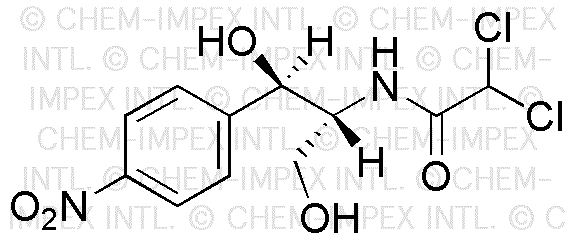Chloramphenicol is widely utilized in research focused on:
- Antibiotic Development: It serves as a crucial model for developing new antibiotics, particularly in studying bacterial resistance mechanisms.
- Veterinary Medicine: Commonly used to treat infections in animals, providing a vital option for veterinarians in managing bacterial diseases.
- Pharmaceutical Research: Employed in drug formulation studies, helping researchers understand the pharmacokinetics and pharmacodynamics of antibiotics.
- Laboratory Testing: Utilized in microbiological assays to test the efficacy of other antimicrobial agents, aiding in the development of new treatments.
- Clinical Applications: Effective in treating serious infections caused by specific bacteria, offering a reliable option for healthcare providers in critical care settings.
General Information
Properties
Safety and Regulations
Applications
Chloramphenicol is widely utilized in research focused on:
- Antibiotic Development: It serves as a crucial model for developing new antibiotics, particularly in studying bacterial resistance mechanisms.
- Veterinary Medicine: Commonly used to treat infections in animals, providing a vital option for veterinarians in managing bacterial diseases.
- Pharmaceutical Research: Employed in drug formulation studies, helping researchers understand the pharmacokinetics and pharmacodynamics of antibiotics.
- Laboratory Testing: Utilized in microbiological assays to test the efficacy of other antimicrobial agents, aiding in the development of new treatments.
- Clinical Applications: Effective in treating serious infections caused by specific bacteria, offering a reliable option for healthcare providers in critical care settings.
Documents
Safety Data Sheets (SDS)
The SDS provides comprehensive safety information on handling, storage, and disposal of the product.
Product Specification (PS)
The PS provides a comprehensive breakdown of the product’s properties, including chemical composition, physical state, purity, and storage requirements. It also details acceptable quality ranges and the product's intended applications.
Certificates of Analysis (COA)
Search for Certificates of Analysis (COA) by entering the products Lot Number. Lot and Batch Numbers can be found on a product’s label following the words ‘Lot’ or ‘Batch’.
*Catalog Number
*Lot Number
Certificates Of Origin (COO)
This COO confirms the country where the product was manufactured, and also details the materials and components used in it and whether it is derived from natural, synthetic, or other specific sources. This certificate may be required for customs, trade, and regulatory compliance.
*Catalog Number
*Lot Number
Safety Data Sheets (SDS)
The SDS provides comprehensive safety information on handling, storage, and disposal of the product.
DownloadProduct Specification (PS)
The PS provides a comprehensive breakdown of the product’s properties, including chemical composition, physical state, purity, and storage requirements. It also details acceptable quality ranges and the product's intended applications.
DownloadCertificates of Analysis (COA)
Search for Certificates of Analysis (COA) by entering the products Lot Number. Lot and Batch Numbers can be found on a product’s label following the words ‘Lot’ or ‘Batch’.
*Catalog Number
*Lot Number
Certificates Of Origin (COO)
This COO confirms the country where the product was manufactured, and also details the materials and components used in it and whether it is derived from natural, synthetic, or other specific sources. This certificate may be required for customs, trade, and regulatory compliance.

